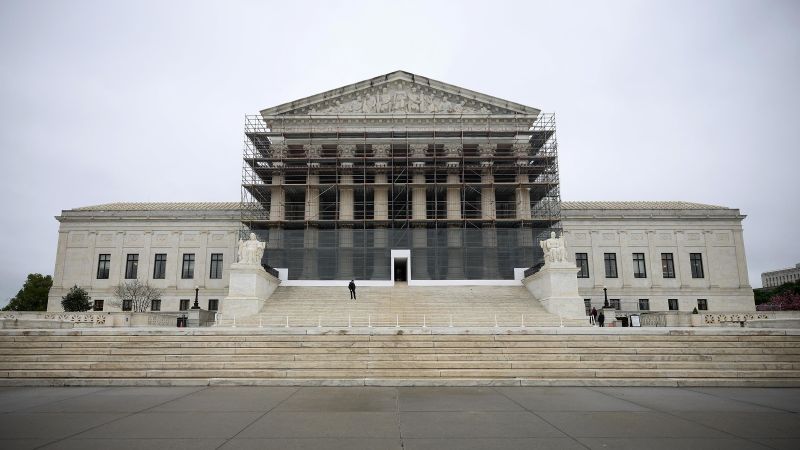On May 15, the Supreme Court is poised to address some critical legal matters stemming from an executive order signed by President Donald Trump on January 20. This executive directive concerns the limitations placed on “birthright citizenship”—specifically, who automatically qualifies as a US citizen if born on American soil. Birthright citizenship has been a cornerstone of American immigration law, granting automatic citizenship to individuals born within the nation’s borders, as outlined in the Citizenship Clause of the 14th Amendment, ratified in 1868.
The Supreme Court’s impending review will not delve into the broader constitutional implications of Trump’s executive order. Instead, the oral arguments will concentrate on a more technical aspect: the series of injunctions issued by three lower courts which obstructed the execution of this policy. This distinction is crucial, as the Supreme Court’s decision will significantly influence whether the policy may be implemented while potentially avoiding a direct ruling on its legality.
Trump’s executive order introduces a considerable alteration to established US practices regarding citizenship, stipulating that children born in the United States on or after February 19, 2021, would not be recognized as citizens if, at the time of their births, their fathers were neither citizens nor lawful permanent residents and their mothers were in the country unlawfully or present on a temporary basis, such as with a student visa. Such changes would impose new requirements for citizenship that have not historically been linked to parental immigration statuses.
Historically, the Supreme Court has interpreted the 14th Amendment to affirm that a child born on US soil is a citizen, regardless of their parents’ immigration statuses. This precedent can be traced back to a ruling in 1898 and reinforced by legislation from Congress in 1940, both reflecting a universal understanding of citizenship that does not discriminate based on parental status.
Following the executive order’s issuance, a wave of lawsuits promptly emerged, aiming to block its enforcement. Multiple federal courts issued “preliminary” injunctions, nullifying the order on grounds of illegality. Among these, federal district courts in Massachusetts, Maryland, and Washington state played pivotal roles in preventing the order from taking effect, creating nationwide bans that affected potential citizenship claims outside those jurisdictions.
As the Trump administration contested these injunctions in the appellate courts, it requested either a pause on the injunctions or for them to be confined to the plaintiffs involved in the lawsuits. The appeals courts denied both requests, leading to the Supreme Court’s involvement.
The administration frames its request for limiting the injunctions as a “modest” one, seeking to restrict the injunctions to only those challenging the policy. Should the Supreme Court grant this request, it would effectively allow the federal government to implement the contentious policy against everyone outside of the individual plaintiffs, thereby expanding the scope of the order across most of the country.
Moreover, the administration’s contention reflects broader concerns regarding the judiciary’s authority to halt a president’s policies on a national level. By framing this argument in the context of birthright citizenship, the Trump administration appears determined to carve a pathway for the court to favor its stance without necessarily affirming the constitutional validity of restricting citizenship.
If the Supreme Court sides with the administration and narrows the injunctions, the immediate effect would allow the citizenship limitations to take hold for numerous individuals. While those affected who are not involved in these lawsuits could still pursue their legal challenges, their individual suits might require considerable time and resources, potentially limiting their access to justice.
The nature of these cases is somewhat atypical; they will be treated as “emergency applications” on the Supreme Court’s shadow docket, which bypasses the regular appeals process. This procedural choice indicates the urgency surrounding the matter. The May 15 proceedings mark a rare occasion for such emergency arguments, with the Supreme Court having only previously heard similar cases thrice since 1971. Historically, quick rulings have followed; thus, we might expect a decisive conclusion, potentially even before the Court’s typical late June term closing.
Thus, the upcoming Supreme Court arguments hold the potential to redefine standards of citizenship in the United States, deeply affecting countless individuals while simultaneously illustrating the ongoing legal complexities surrounding immigration policy. The legal landscape remains uncertain, and the ramifications of the Court’s ultimate decision will be pivotal in shaping the future of birthright citizenship in America.



